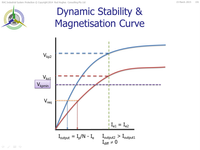A vital issue to the performance of protection systems.
I would first recommend buying a copy of IEC 61869-2 which details all the parameters for specifying CTs. (The previous specification was IEC 60044. In Australia the Standard used to be AS 1675) The alternative is ANSI C57-13
In principle though, for non-differential protection you can generally choose a class P CT.
For this you need to know
- the CT ratio, accuracy (generally 10% will do for protection),
- maximum fault current, and
- the burden (leads plus relays) on the CT.
You then need to calculate the required output VA upto the max fault current for the maximum burden. This is essentially an Ohms Law calculation making sure the voltage developed at the CT terminals at the maximum fault current is sufficient to push the max fault current through the connected impedance. Note if old electromechanical relays, the worst case biggest burden may in fact be an earth fault relay. Although not specifically required for P class, you should also consider Excitation current as the effective setting of the relay is:
Ieff = Isetting + n.Iexcitation where n is number of CTs
e.g. if for an earth fault setting with a 4-CT arrangement, Isetting = 5% and Iexcitation = 5%, the effective setting is 25% so what you think is sensitive setting might not be !!
For differential protection you invariably need class PX.
The kneepoint requirement for this is way different to the terminal voltage requirement associated with non-differential applications.
Calculating the Vkp, as the "internal" voltage rather than the terminal voltage, is to ensure that one CT will force current through the other CT when it is saturated during an external fault
i.e. also applying Ohms Law but as one CT connected to another CT and ignoring the differential relay parallel connection a snot involved for through faults:
Vkpmin >= Ifmax x 2 x (Rct + Rloop) Note that there is a direct relationship between the manufacturers Rct and their Vkp so you may have to specify the formula to be satisfied rather than the actual values - i.e. if they use a lower Rct, then they could have a lower Vkp. In specifying PX class, it is not simply sufficient to ensure that Vkp exceeds the minimum. The objective is to minimise dynamic performance at all current levels with different excitation currents, hence the slope of the magnetising curve needs to be as close as possible - these two CTs comply to the minimum Vkp require and have the same Excitation current but may lead to some reduction in stability for through currents due to the different slopes of {Vkp2 / Ie2 } > {Vkp1 / Ie1 }. For a given current flowing through both CTs requiring a certain voltage, the different excitation currents mean there will be a different outpout current and hence will be seen as a false differential  (click to enlarge) (click to enlarge)
The other thing to note here is that PX specifies a WINDING Ratio, not a current ratio - the difference is subtle but in a P class the turns are adjusted to achieve a certain current ratio accuracy where as PX you want the CTs to be physically identical with exactly the same number of turns.
Consider two P class CTs connected in Merz-Price circulating current connection for a High Impedance Differential application.
Both CTs are 10P20 .... so at 20 x rated current they are within 10% accuracy
Hence for a 1 A rated current CT, at maximum fault current of 20 x rated one could be producing 18 A and the other producing 22 A. This means there could be a false differential current of as much as 4 A which can ONLY flow through the relay.
Or a 5 A rated current, at maximum fault current of 20 x rated, one is producing 90 A and the other 110 A. This is a false differential of as much as 20 A flowing through the relay. Refer this child page to this page : Current Transformer PX class is not specified as Burden, P class is
|